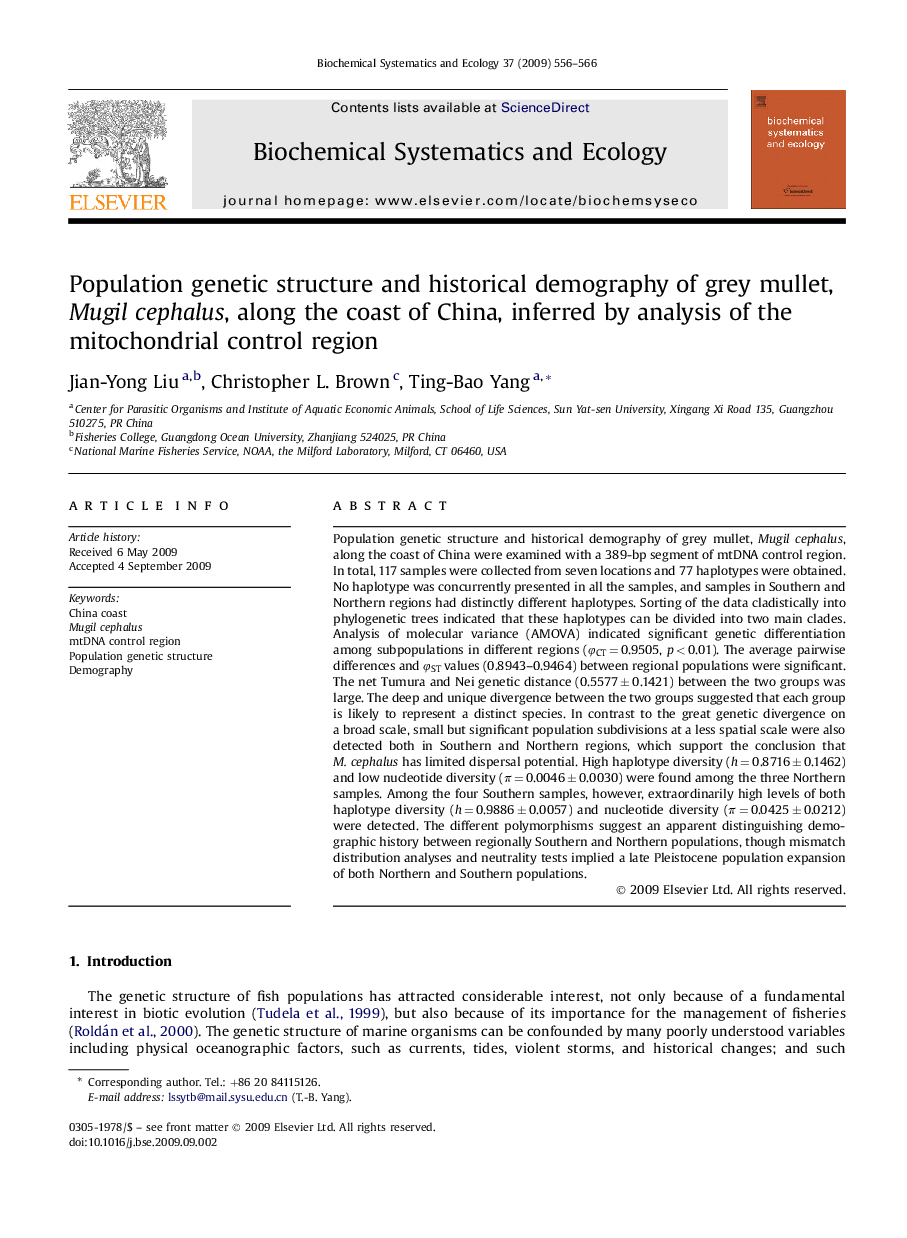| کد مقاله | کد نشریه | سال انتشار | مقاله انگلیسی | نسخه تمام متن |
|---|---|---|---|---|
| 1354548 | 980745 | 2009 | 11 صفحه PDF | دانلود رایگان |

Population genetic structure and historical demography of grey mullet, Mugil cephalus, along the coast of China were examined with a 389-bp segment of mtDNA control region. In total, 117 samples were collected from seven locations and 77 haplotypes were obtained. No haplotype was concurrently presented in all the samples, and samples in Southern and Northern regions had distinctly different haplotypes. Sorting of the data cladistically into phylogenetic trees indicated that these haplotypes can be divided into two main clades. Analysis of molecular variance (AMOVA) indicated significant genetic differentiation among subpopulations in different regions (φCT = 0.9505, p < 0.01). The average pairwise differences and φST values (0.8943–0.9464) between regional populations were significant. The net Tumura and Nei genetic distance (0.5577 ± 0.1421) between the two groups was large. The deep and unique divergence between the two groups suggested that each group is likely to represent a distinct species. In contrast to the great genetic divergence on a broad scale, small but significant population subdivisions at a less spatial scale were also detected both in Southern and Northern regions, which support the conclusion that M. cephalus has limited dispersal potential. High haplotype diversity (h = 0.8716 ± 0.1462) and low nucleotide diversity (π = 0.0046 ± 0.0030) were found among the three Northern samples. Among the four Southern samples, however, extraordinarily high levels of both haplotype diversity (h = 0.9886 ± 0.0057) and nucleotide diversity (π = 0.0425 ± 0.0212) were detected. The different polymorphisms suggest an apparent distinguishing demographic history between regionally Southern and Northern populations, though mismatch distribution analyses and neutrality tests implied a late Pleistocene population expansion of both Northern and Southern populations.
Journal: Biochemical Systematics and Ecology - Volume 37, Issue 5, November 2009, Pages 556–566